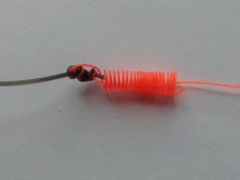Posts Tagged ‘Nymphs’
{{start}}
The word nymph has of course two fly fishing meanings. The first is “Juvenile, sexually immature stage of certain insects, usually similar to the adult in form, and which require an intermediate stage before becoming an adult. Mayflies, Caddis flies, Dragonflies, Damselflies, Stone flies and Midges are all insects that spend part of their life cycle in the water and have a nymph stage.” The second is flies tied to imitate the first i.e. “the nymphal stage of an insects life cycle”. I have narrowed down the selection of nymphs that I carry to just the list below.
{{end}}

{{+1}}2019 trout river season – almost upon us{{-1}}
{{start}}
Because the 2019 trout river season due to open across our eastern states I have started a review of my various fly boxes that will come in to play. For me My "trout" river wet fly box is the most important fly box in the open season so that has been my first fly box reviewed. These are the changes I have made:{{end}}

{{+1}}UV cruncher{{-1}}
{{start}}
More of a class of fly than a fly in itself because you will find UV crunchers tied a all sorts of colours from black right through to dun colours and pale olives. I like this particular tie because it incorporates peacock herl which is one of my favourite fly tying materials.{{end}}
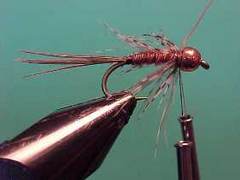
{{+1}}Hybrid spider nymph – Chatto’s original{{-1}}
{{start}}
This is more a class of flies rather than just one fly and is a hybrid of a spider fly and a bead head nymph with a tungsten bead up front. I carry 4 different hybrid spider nymphs in two sizes and find them particularly useful in situations where I need a bit of weight to get a fly down yet still want the anchor fly to fish well and be enticing to trout rather than just being an anchor for other flies in the team.{{end}}

{{+1}}Black Spectra nymph{{-1}}
{{start}}
I also tie it with a little added weight because if river water is a little dirty its often running a little stronger as well and I always reckon it best to get your fly down to where the fish are holding. The weight is also useful if you use this fly on the point of your loch fly team as it does help the leader to stay straight and decreases the incidence of loose line.{{end}}

{{+1}}Chatto’s “inch” nymph{{-1}}
{{start}}
This fly has been designed with polaroiding in mind. Its also a great fly for covering rising fish ... particularly if mayfly are around. It's unlike all the other nymphs that I tie in that it is tied with as little extra weight as possible. As a result it hits the water softly and once there sinks slowly in a realistic way giving the target fish plenty of time to see the fly and hopefully eat it.{{end}}

{{+1}}Gold ribbed hares ear{{-1}}
{{start}}
This is probably up there in the top 3 or 4 best known nymph patterns. It's a pattern that has stood the test of time and is suggestive of a wide range of caddis and mayfly nymphs and is best fished close to the bottom. It doesn't matter if your in Argentina or Australia or any where between, past, above or below this is a true universal fly pattern.{{end}}
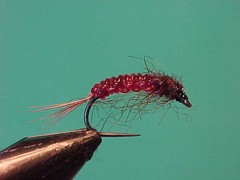
{{+1}}Flat knitted nymph{{-1}}
{{start}}
Because the nymphs of many mayflies and caddis spend a good part of their life cycle living under rocks in both still and running water its not surprising that many have taken on a relatively flat form. This knitted grub has a relatively flat body mimicking many of the naturals and also has plenty of structure on the body suggesting the various body segments.{{end}}
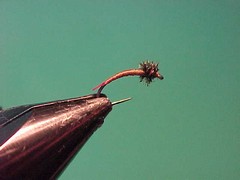
{{+1}}Mini pupa{{-1}}
{{start}}
When tiny pupa / nymphs are emerging they emerge in large numbers and fish often feed on them at the exclusion of all other offerings. The best technique is to cover rising fish. In this type of fishing casting speed and accuracy are as essential as an appropriate fly.{{end}}
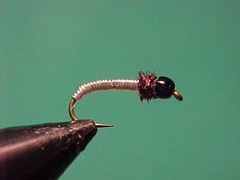
{{+1}}BH Brassie{{-1}}
{{start}}
The bead head version of the Brassie fly has been around for a long time and certainly has a place in ever river fly box. It's a handy fly to have on hand if you need a buggy looking fly that sinks like a brick or an anchor fly for a team of two or three flies. If this fly is a little heavy try the non bead head version QUICK LINK{{end}}














